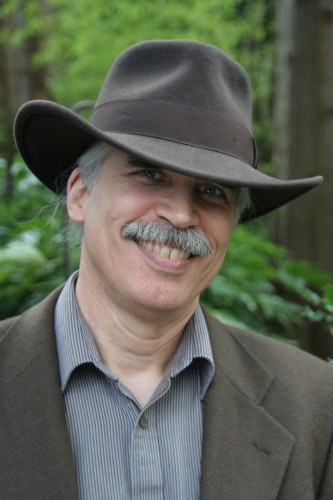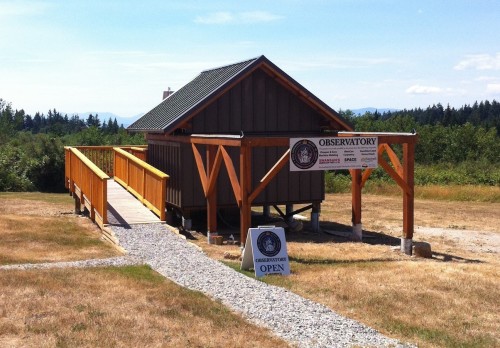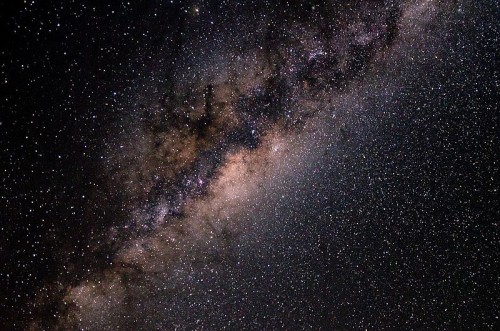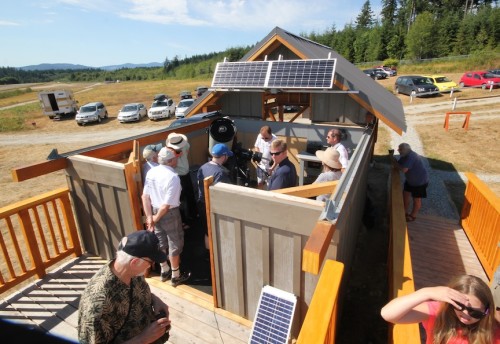“For my part I know nothing with any certainty, but the sight of the stars makes me dream.” — Vincent van Gogh
There once was a time when earlier generations could look up at the night sky and they were able to observe the cosmos in its entire splendor. The depth and range of the stars were obvious, far beyond what we can see today. Our ancestors created art, philosophy, religion and culture based on how they perceived themselves in the universe. This was inspired by what they could witness in the night sky. Somewhere along the way we lost this vision, our perspective was blurred and diminished. This change was brought about by the constant presence of artificial light, generously and carelessly spilled upwards, into the heavens, drowning out the beacons of light that once guided us.
Over exposure to artificial light has been linked to various health issues, from sleep disorders to depression. Human beings tend to have a natural inclination to soft, warm light, such as the cozy glow of candles, or crackling campfires, yet we overwhelm our communities with the blaring glare of spotlights, electronic billboards and flashing marquees.

Author & astronomer, Kerr Cuhulain. [Courtesy Photo]
Also known as Detective Constable Charles Ennis, he retired from a long career in law enforcement in 2013. He served as a police officer for the Vancouver Police Department and as a police dispatcher. Often, his commitment to the Pagan community blended with his professional career. He was actively involved in anti-defamation activism and hate crime investigations on behalf of the Pagan community since 1986.
When Cuhulain retired from his career, all of his newly discovered free time had to be re-applied to something. He soon discovered that this freedom provided him with an opportunity to devote more time to one of his passions – astronomy. So he chose to become involved in the creation of something special – the building of an observatory.
Cuhulain said, “I joined the Sunshine Coast Centre (SCC) in 2013. The observatory construction had commenced in 2012. I participated in the building of the observatory, and when I became president of the SCC in December 2014 I presided over the completion of the observatory, the grand opening, and the subsequent training of Qualified Operators and the start of public viewing sessions.”

The Sunshine Coast Centre Observatory. Photo by Kerr Cuhulain
The Sunshine Coast Centre is a community group located at the Sunshine Coast Regional Airport near Wilson Creek on the West Coast of British Columbia, Canada. It has been recognized by the acclaimed Royal Astronomical Society of Canada, a national astronomy organization consisting of thousands of members, offering programs and events from coast to coast. When the observatory opened June 27, 2015, people came from far and wide for a look through the telescope. Cuhulain saw the effect that this experience had on the curious visitors.
He said, “On the day of our grand opening we had a ‘First Light’ ceremony where the public came to see the night skies. Some foreign students were brought to the SCC Observatory by one of our members who is a grade 9 science teacher. One of the young men, an Iraqi, came to me just as we were about to close up for the night and put his hands on my shoulders and said, ‘This has been the most amazing night of my life. I will never forget this night.’ And I smiled and thought: That’s why we built this observatory.”
Astronauts who have viewed our planet from space report a phenomenon known as “The Overview Effect”. This euphoric sensation is a cognitive shift in awareness caused by actually seeing the Earth for what it is, in space. This revelation creates a spiritual awakening, and the space traveler comes to realize that the borders and conflicts that separate us are just not worth it. Our small blue planet is just a dot in an unimaginably vast sea of stars, and that we must protect and preserve it. According to Apollo 14 astronaut, Edgar Mitchell, “You develop an instant global consciousness, a people orientation, an intense dissatisfaction with the state of the world, and a compulsion to do something about it.”
For those of us who won’t be traveling into outer space anytime soon, visiting an observatory will be as close as we can get to experience this effect. Cuhulain agreed and has similar ideas about how the experience can enrich our lives. He said, “It helps you get yourself back into synchronization with the natural cycles of the days, seasons, and years, back into connection with the universal energy around you. A lot of modern illnesses arise from disruption of circadian rhythms and this connection helps you get back into a healthier lifestyle. It teaches you to respect what we got here on this Earth because you can see the vast forces at work around us and how fragile a balance we have here.”

The Milky Way. [Photo courtesy of Wikimedia Commons]
Cuhulain fields all kinds of questions from visitors to the observatory. To the above question, he said: “One of the most common questions I get asked when people contact me to set up observatory sessions is: ‘What nights of the year can you see things?’ They ask this because 2/3 of the world’s population can no longer see the night sky due to light pollution caused by artificial light at night. They can no longer see the night sky that was a glory to our ancestors and thus have no idea how much there is to see up there any clear night. People come to these sessions and ask: ‘What is that glowing cloud in the sky?’ I tell them it is their home, the Milky Way galaxy. Seeing the sky gives you a completely different perspective regarding your place in this universe and the importance of respecting this tiny world we live on.”
The problem of alienation from the stars may be worse than we are even aware, because most of us are used to seeing the night sky washed out by light pollution. This has become normal to our urban eyes. Luckily, this form of pollution is reversible, all we need to do is turn off the lights. The International Dark-Sky Association recommends that we all take initiative to reduce light pollution, by only using artificial light when absolutely necessary, using energy efficient bulbs, shielding outdoor lights, using motion detector lights and timers and keeping blinds down at night so that interior light doesn’t spill outside. The benefit of this, as Cuhulain describes, is a new perspective:
He said, “If your perspective of the universe around you is the glare of street lights and billboards, revealing landscapes imprisoned in steel, glass, and concrete, your perspective of the world is confined and your universe a small one. If your perspective of the universe is a clear view right out to the edge of the observable universe, your perspective is unconfined and open to endless possibilities. Our SCC Observatory opens people’s eyes to the size and splendor of their universe and gives people back that perspective”

Visitors to the observatory get up close to the telescope. [Photo courtesy of K. Cuhulain]
Cuhulain said, “When I do public presentations I ask for a show of hands for the question: ‘How many of you have taken the time to watch the moon rise?’ Typically less than half of the people put their hand up. I then ask them: ‘How many of you have taken the time to watch the moon rise on another planet?’ This typically results in a lot of puzzled stares. And I tell them: “I’m the guy with the telescope, remember? I’ve watched the moons rise on Jupiter and Saturn, and you can too.”
If you would like to see how serious light pollution is in your area, check out NASA’s Blue Marble Navigator. And remember to give yourself a break from artificial light, and remember to look up and seek the stars.
The Wild Hunt is not responsible for links to external content.
To join a conversation on this post:
Visit our The Wild Hunt subreddit! Point your favorite browser to https://www.reddit.com/r/The_Wild_Hunt_News/, then click “JOIN”. Make sure to click the bell, too, to be notified of new articles posted to our subreddit.

What great work he’s doing and what a great article! Thank you.
Interesting article! He is right about looking up without light pollution and putting a whole new perspective on our planet and life. I have been lucky enough to experience moon rises, early morning sun rise, and the night sky reflected on the ocean both Atlantic and inland ocean. Truly one of life’s magical experience’s.
I wish there was a way to shield streetlights from contributing upward light scatter.
I have a vague memory, from working on a conference proceedings on drops and bubbles (don’t laugh, it was a multi-disciplinary conference, and some of the papers were fascinating to me, who follows science developments on a number of topics, but the mathematics was (were?) way over my head) as a galley slave. I know at least two or three dealt with light scatter, but my copy of the book is buried.
I’ve had the chance to see stars filling the Northern skies, but not the Southern ones. I’ve crossed the dateline three times as a child, but always in the northern hemisphere.
I’ve ascended mountains in a car or a lift, looking out over the land below, stood in the quiet of redwood groves, enjoyed the ocean, walked carefully over tide pools, climbed up to the ruins of Shuri Castle on Okinawa (1961, before it was reconstructed). I’ve ridden out a number earthquakes, often marvelling at the power of the earth. I still want to see auroras, visit Iceland (Eric, it’s mostly your fault), spend more time in Scotland, Glastonbury and the southern part of England at various megalithic sites, Cornwall, and the moors of that peninsula–oh, also a sunken garden, recently restored. I wish I could trek around Brittany and take the road to Compostela with Rhyd, but not happening any time soon. I did get to the remains of the Forest of Brocéliande. Merlin’s Well, and Carnac, but didn’t get to Mont St-Michel.
There are so many wonders out there, and many of them are around us every day, if you only let yourself relax and percieve them. If you can’t escape from your urban life, go to a garden centre or a park. I find both fun, refreshing, and energising my soul.
I haven’t heard of a single astronaut who looked down at Earth and was not moved. There are some divisive persons I wish I could send into orbit so that they would experience that particular “light bulb”.